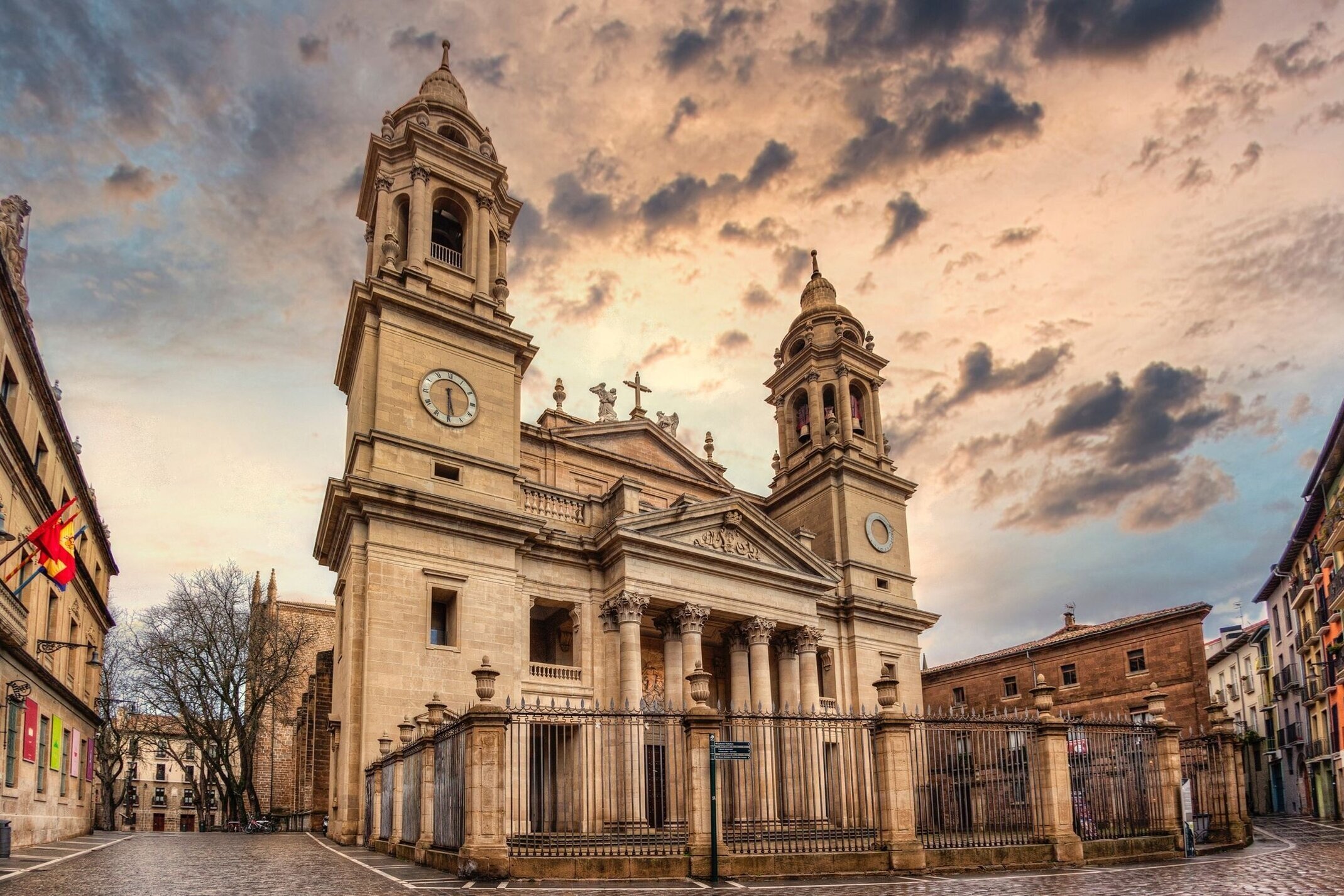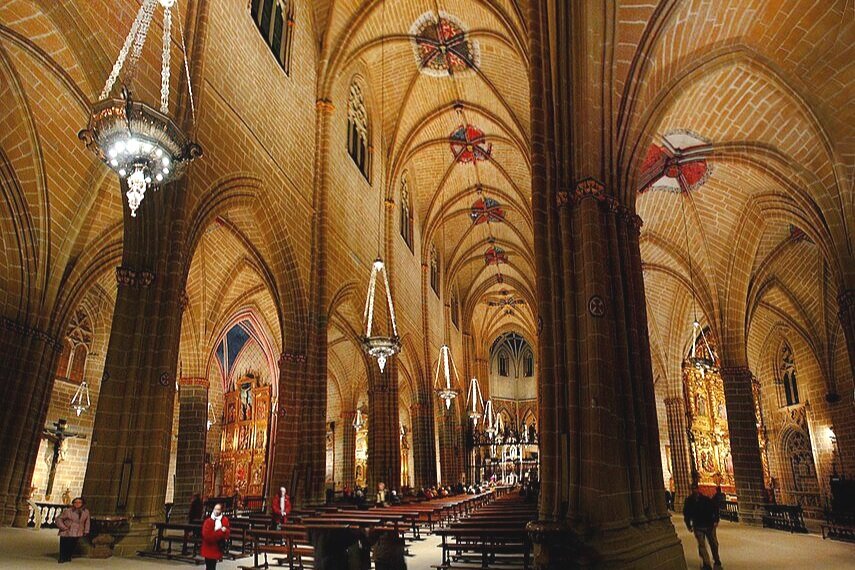The Royal Holy Mary Cathedral of Pamplona
Fran Glaría | Traveling Steps
At the highest point in Pamplona, Spain, we find the city’s magnificent cathedral, an amazing temple from the 15th century, consecrated in honor of the Holy Mary—Santa María la Real (The Royal Holy Mary).
Façade of the Cathedral of Pamplona
Image | Yiorsito, Wikimedia Commons
The façade is probably not the most impressive part of the cathedral. In fact, it is not even from the 1400s, but dates from just the 1700s. The old façade collapsed and was reconstructed in the neoclassical style, which is much more austere and minimalistic. Inside the tower on your left, you will see Spain’s largest bell (it weighs about twelve tons). The name of the bell is “Maria.” On the right tower you will find a sundial that doesn’t work. If you look at the time it is 2 hours behind the real time but even if it worked correctly, it wouldn’t be reliable. Pamplona is one of the rainiest cities in Spain, and a sundial without the sun just doesn’t work.
Gothic cathedrals such as this were built with the purpose of trying to reach God and to let the light of God embody your soul. This temple achieves this beautifully. Inside, you will find a very elegant and slender cathedral illuminated by the sunlight coming through stained-glass windows. It is almost mystical.
The most important image is at the main altar on top of a very thin silver pillar. It is the Royal Holy Mary. Almost 1000 years old, it is the oldest image of our Lady in Navarre. A wooden reliquary covered with silver, her clothes are changed according to liturgy and has such an extensive wardrobe, even Kim Kardashian would die of envy. At Easter, to mourn the death of her son, she is dressed in her humblest gown and her crown is removed... there is nothing to celebrate. On the other hand, during the festival of San Fermín (the Running of the Bulls) she is bedecked in her red and gold gown and is adorned with her most spectacular golden crown as a tribute to the Saint.







In the middle of the nave, we find the royal pantheon of King Charles III (1361-1425) and his wife Queen Leonor of Trastamara (1363-1416), the monarchs of Navarre who commissioned the construction of the temple. The royal mausoleum features alabaster sculptures by the French artist Jehan Lome de Tournay. The face of the king is realistic since he was alive when it was sculpted. Unfortunately, the face of the queen is less lifelike as she had already passed away when this likeness was made. The royal couple are buried in a crypt located underneath the pantheon.
Along the ambulatory, we find symmetrical Baroque altars made in 1713. Behind the altar, we find sculptures depicting local saints, golden angels, golden flowers, and even more golden fruits, as if they were truly touched by King Midas himself.
Want to see and learn more? Watch this virtual tour of my hometown’s incredible cathedral:
If you’re planning a trip Pamplona and want to visit the cathedral and its museum, you can check here for the latest information on general visit details, including opening hours, ticket prices, and climbing the bell tower. If you’d like to explore this and more sights of Pamplona on one of my guided tours, please visit Traveling Steps or email me at francisco@gesrural.es.

